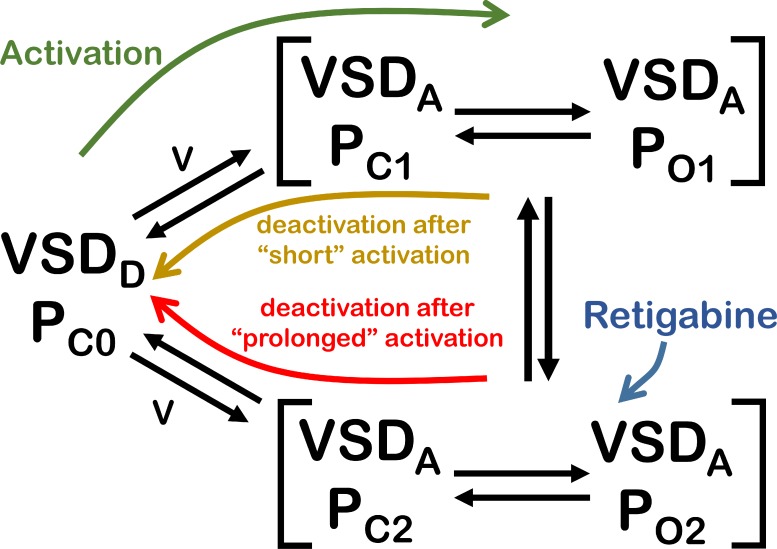Figure 6.
Proposed kinetic scheme for the activity of KV7.2/KV7.3 and the effect of Retigabine. The scheme contains five global states, which are different with respect to each other depending on the activation status of the VSD and the pore domain (P). In the scheme, VSD represents the four voltage sensors of the channel. At negative potentials, the VSDs are in the deactivated state (VSDD) and the pore is, therefore, closed (PC0). Upon depolarization, the VSDs are activated (VSDA), allowing the pore to sojourn between a conductive and a nonconductive state (PO1 and PC1, respectively). Holding the membrane depolarized potentials keeps the VSDs in the VSDA state while allowing a second transition in the pore. As a result, the pore sojourns between a second pair of conductive and nonconductive states (PO2 and PC2, respectively) and the channel becomes Retigabine sensitive. Deactivation from these states is slower than from the pair PC1–PO1. Retigabine further decreases the rate of deactivation from the pair PC2–PO2 while leaving deactivation unaffected from the other pair.

